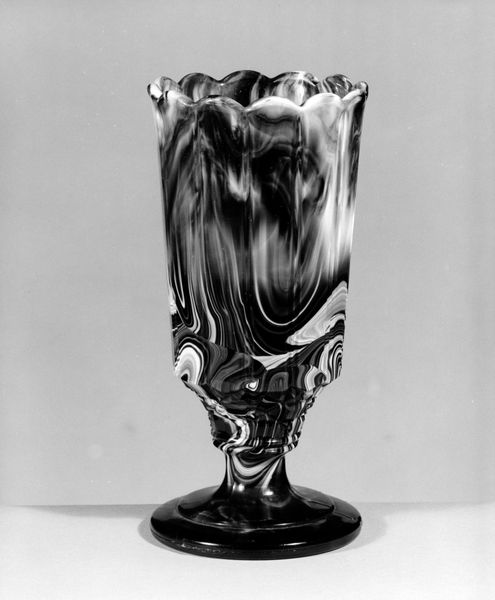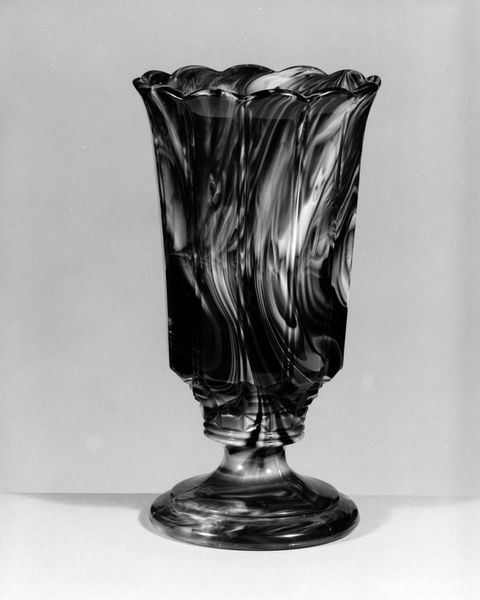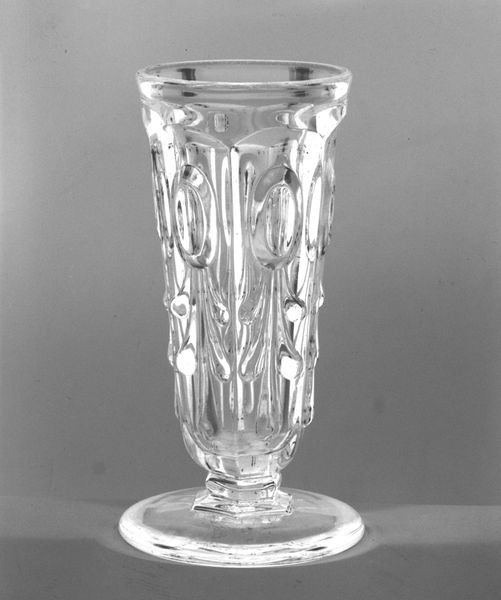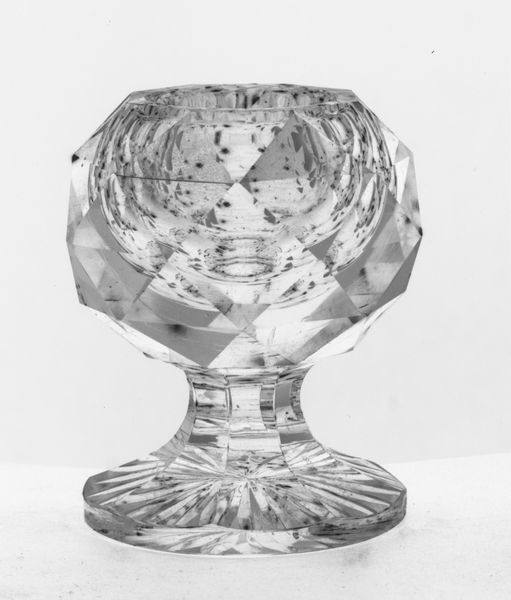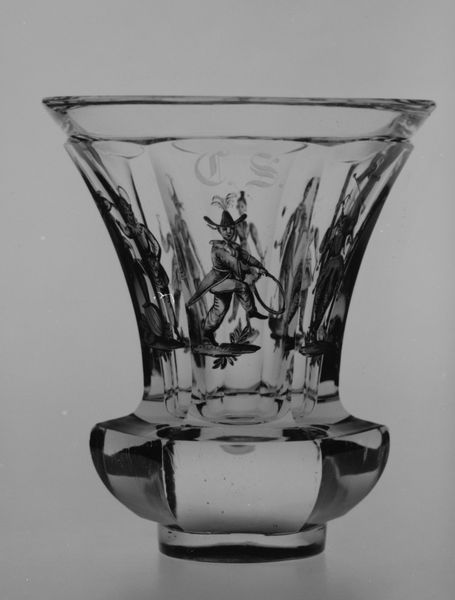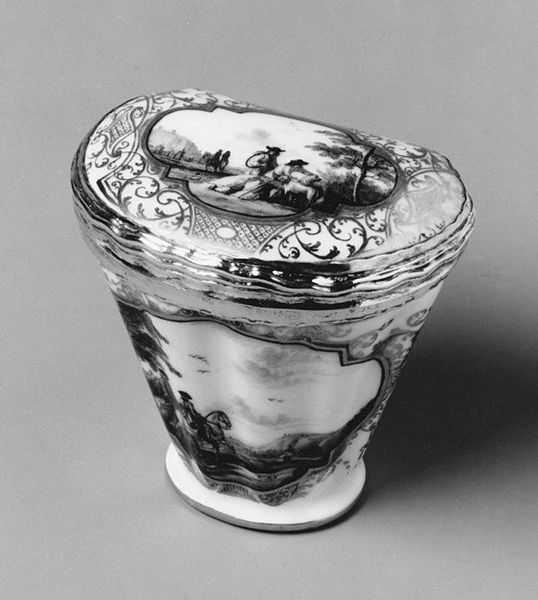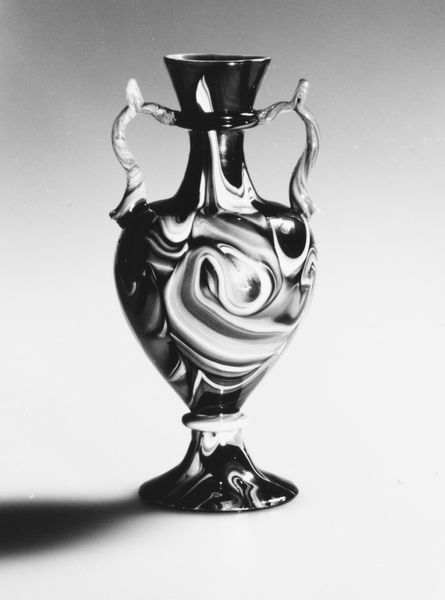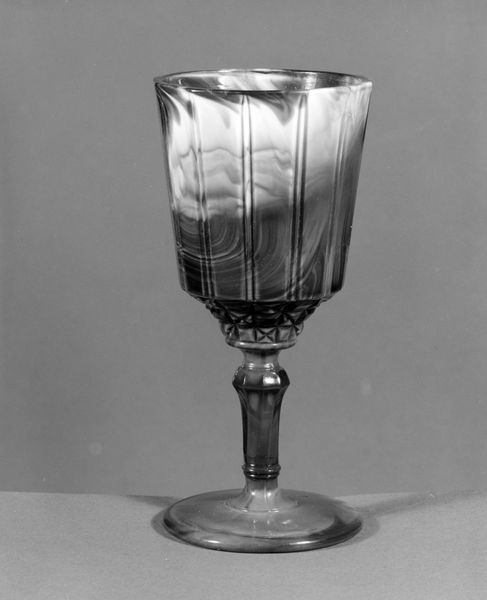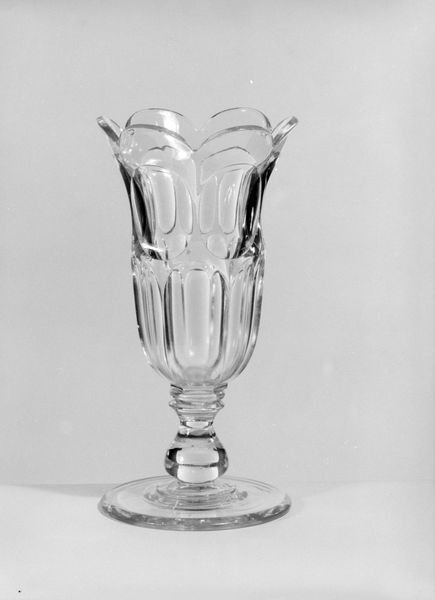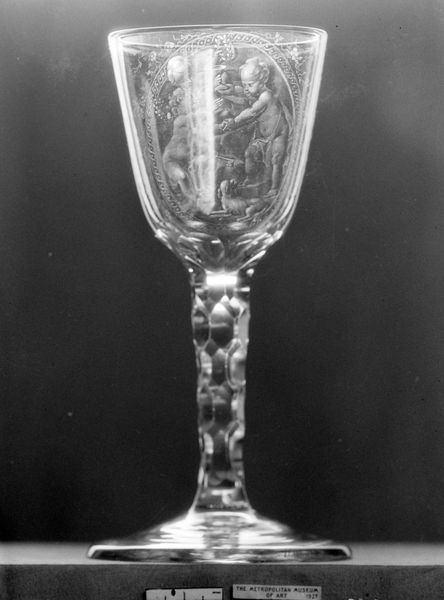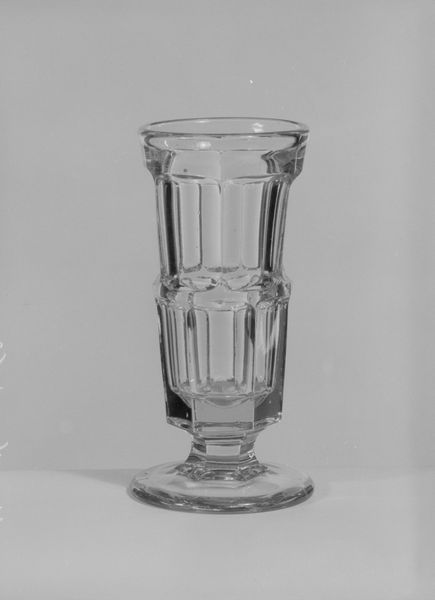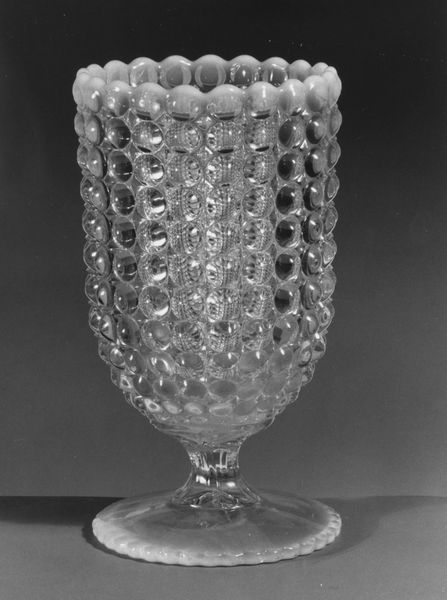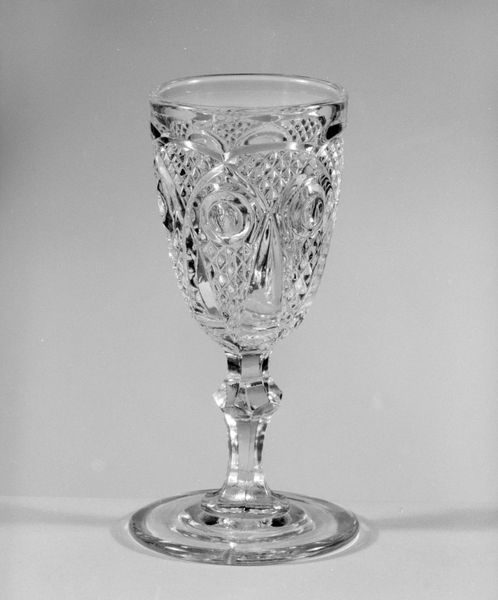
print, photography, glass, sculpture
# print
#
sculpture
#
photography
#
glass
#
sculpture
Dimensions: H. 5 1/2 in. (14 cm); Diam. 3 11/16 in. (9.4 cm)
Copyright: Public Domain
Editor: Here we have "Spoon Holder," made between 1870 and 1880 by Challinor, Taylor and Company. It’s currently held at the Metropolitan Museum of Art. The striking marbleized pattern gives it an almost turbulent feel. What's your interpretation of this piece? Curator: This "Spoon Holder," seemingly a mundane object, invites us to consider the Victorian era’s complex relationship with class and domesticity. Objects like these, mass-produced yet aspiring to elegance, were integral to shaping a burgeoning middle class. How do you think this object reinforced or perhaps challenged existing social hierarchies through its form and accessibility? Editor: That's a good point, I hadn't thought about how accessible these would have been. Thinking about it now, its elaborate appearance suggests aspirations of affluence and domestic order, yet being mass produced would mean it was within reach of middle-class families, right? Curator: Exactly! These objects weren't merely functional; they were active participants in a visual culture promoting specific ideals of femininity and domesticity. Its design, even in its practical function, mirrors broader Victorian fascinations with display and social performance. Consider also, how the very act of collecting and displaying spoons—items tied to nourishment and home—served as a visual assertion of domestic power. Editor: So, by displaying such an ornate holder filled with spoons, one could subtly perform their understanding of middle-class social conventions and gender roles, all tied into a broader performance of social identity. It becomes far more meaningful when considering the time it was created, rather than just an aesthetic. Curator: Precisely! And understanding these connections is crucial to unraveling the rich layers of meaning embedded within everyday objects. Editor: Thanks, that’s an eye-opening perspective, linking the art object to sociological themes in its context makes a real difference to how I see it.
Comments
No comments
Be the first to comment and join the conversation on the ultimate creative platform.
